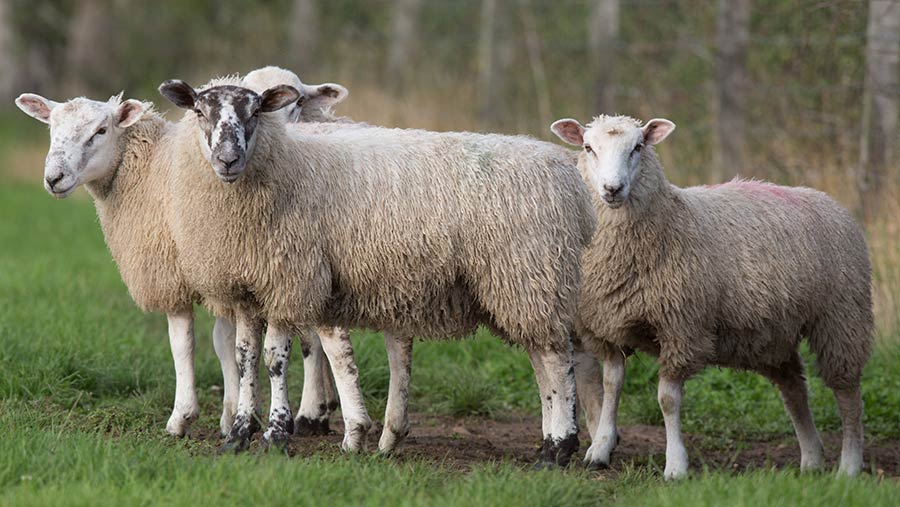UK lamb crop estimated to be down 1m head
 © Tim Scrivener
© Tim Scrivener The 2018 UK lamb crop is estimated to be about a million head lower than in 2017, because of the harsh spring weather.
June 2018 census figures published by the Scottish government point to 8% fewer lambs on farms at 1 June than in the previous year – the lowest lamb crop since 2013.
Defra’s provisional UK-wide census figures put the overall drop in the lamb crop at 2%, which equates to a fall of 400,000 head.
See also: Get the latest market prices on FWi
But Rebecca Oborne, AHDB market analyst, pointed out that this figure had been calculated assuming the losses in Wales would be the same as in 2017, because the Welsh census figures are not yet available.
“When the data for Wales is released, we expect a decline in the number of lambs on farm to be recorded there too, probably similar in percentage terms to that in Scotland,” she said.
“If that decline is as expected, then the overall UK lamb crop would be near to a million head lower than last year, which would be closely in line with AHDB’s forecast released in April.”
Total UK lamb production is typically between 16m and 17m head each year.
Ewe losses
Iain Macdonald, senior economic analyst with Quality Meat Scotland (QMS), said part of the reason for such a sharp fall in lamb numbers in Scotland was a significant fall of 4% in ewe numbers on 2017.
Given that ewe numbers reported in the December census had been slightly above year-earlier levels, this unfortunately pointed to an increase in ewe mortality.
Slaughter levels
At the UK level, DEFRA statistics point to an 8% year-on-year decline in slaughter numbers in the June to September period, with GB auction volumes down heavily over this period, Mr Macdonald said.
The size of this fall suggests that lambs have been taking longer to finish than last year, perhaps signalling that numbers could begin to recover in the final quarter of 2018.
Ms Oborne said that while it was possible slaughterings would pick up towards the end of the year, she was not expecting a massive surge.
Export potential
Mike Gooding, director at processor and exporter Farmers Fresh, said he was seeing strong demand for UK product as European supplies of lamb started to dry up, but he would get a clearer idea of what buyers were thinking after attending the food exhibition SIAL in Paris (21-25 October).
“It is interesting to note that the lamb coming from Australia has suffered significantly in the drought, in terms of its quality and consistency, and that gives an interesting opportunity for us in the UK.
“I think we’ll continue to see good demand and I think we’ll see some light lamb trade up to Christmas.”
Mr Gooding said if there were tight supplies and good demand, then economic principles suggested prices should rise.
But he warned: “I think it will vary week to week – I don’t think it is going to be easy to predict.
“Of course the big unknown is what happens to Brexit. If we default to tariffs which stick anything on the cost of our product, then we’re going to be at a competitive disadvantage.”
James Sealy, auctioneer at Newark livestock mart, said he felt that farmers sitting on lambs in the hope that prices would rise significantly were being overly optimistic.
“My advice is if the lambs are fit they want selling. There is absolutely no point sitting on them to incur further costs, on a hope and a wing and a prayer that they get firmer.”
Price update
The Great Britain NSL liveweight SQQ price in the week to 10 October was 168.66p/kg lw, up 3.62p/kg lw on the week before.
While this figure is below year-ago levels, and significantly lower than the record prices seen this spring, it is higher than the five-year average.
Prices often fluctuate at this time of year, before typically beginning to gently rise from November onwards.
Global market factors
Beef + Lamb NZ has forecast a 4% decline in the current NZ lamb crop.
If NZ farmgate prices hold firm, then lamb imported to the UK ahead of Christmas and Easter will continue to look expensive compared with historical averages.
The Australian lamb crop has been revised up to 22.9m head, a 2% increase over 2017, although production from these lambs is still forecast to be stable due to lower carcass weights.
Eurostat figures for the June to August period show that slaughterings rose by 7% in France, while processing increased in June and July in Belgium, Germany, Spain, Sweden, Italy and Greece.
